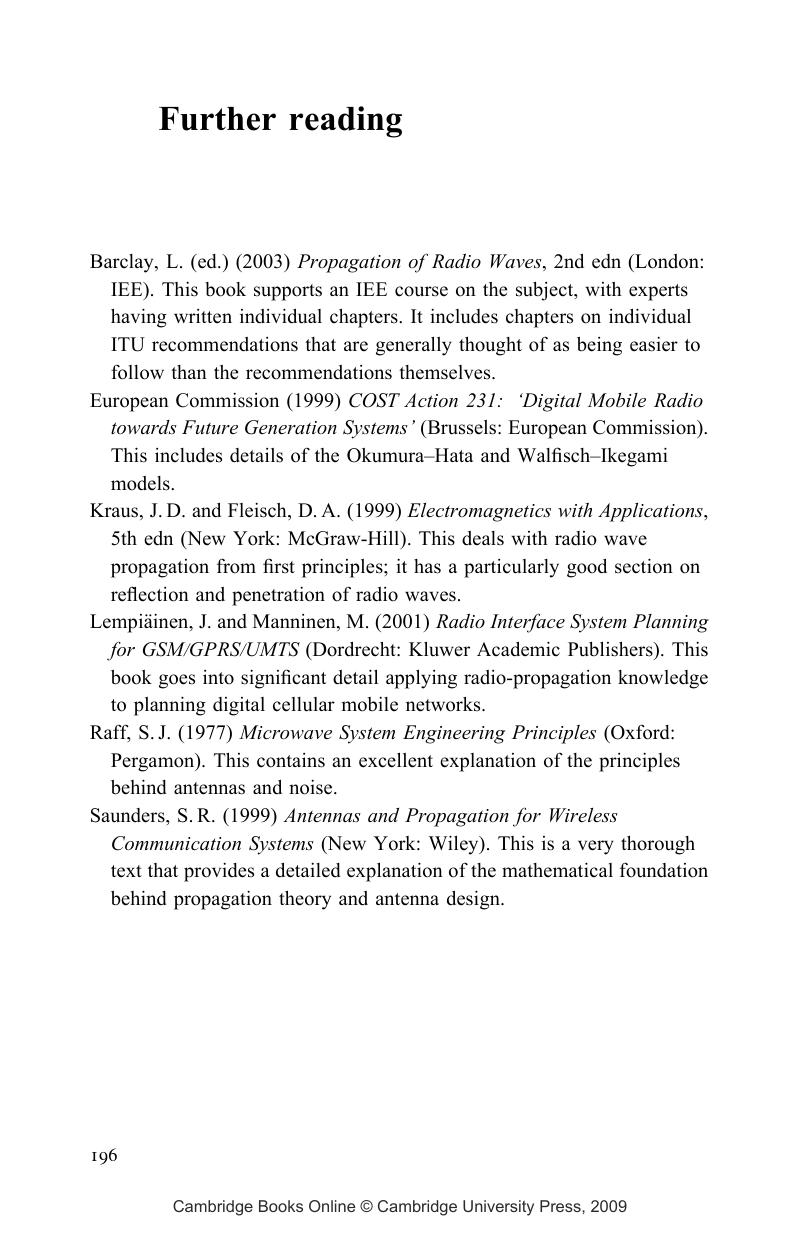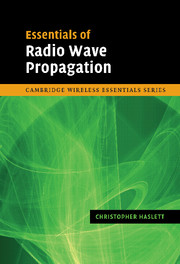Book contents
- Frontmatter
- Contents
- Preface
- Acknowledgements
- 1 Propagation in free space and the aperture antenna
- 2 Point-to-area transmission
- 3 The effect of obstacles
- 4 Reflection, scatter and penetration
- 5 Estimating the received signal strength in complex environments
- 6 Atmospheric effects
- 7 System design and interference management
- 8 Software-based tools
- 9 Summary
- Appendix 1 The decibel scale
- Appendix 2 Phasor arithmetic and phasor diagrams
- Appendix 3 Formula sheet
- Appendix 4 Explanation of the link budget
- Further reading
- References
- Recommendations of the Radiocommunication Bureau of the International Telecommunications Union (ITU), Geneva
- Author's biography
- Index
- References
Further reading
Published online by Cambridge University Press: 09 August 2009
- Frontmatter
- Contents
- Preface
- Acknowledgements
- 1 Propagation in free space and the aperture antenna
- 2 Point-to-area transmission
- 3 The effect of obstacles
- 4 Reflection, scatter and penetration
- 5 Estimating the received signal strength in complex environments
- 6 Atmospheric effects
- 7 System design and interference management
- 8 Software-based tools
- 9 Summary
- Appendix 1 The decibel scale
- Appendix 2 Phasor arithmetic and phasor diagrams
- Appendix 3 Formula sheet
- Appendix 4 Explanation of the link budget
- Further reading
- References
- Recommendations of the Radiocommunication Bureau of the International Telecommunications Union (ITU), Geneva
- Author's biography
- Index
- References
Summary

- Type
- Chapter
- Information
- Essentials of Radio Wave Propagation , pp. 196Publisher: Cambridge University PressPrint publication year: 2007



